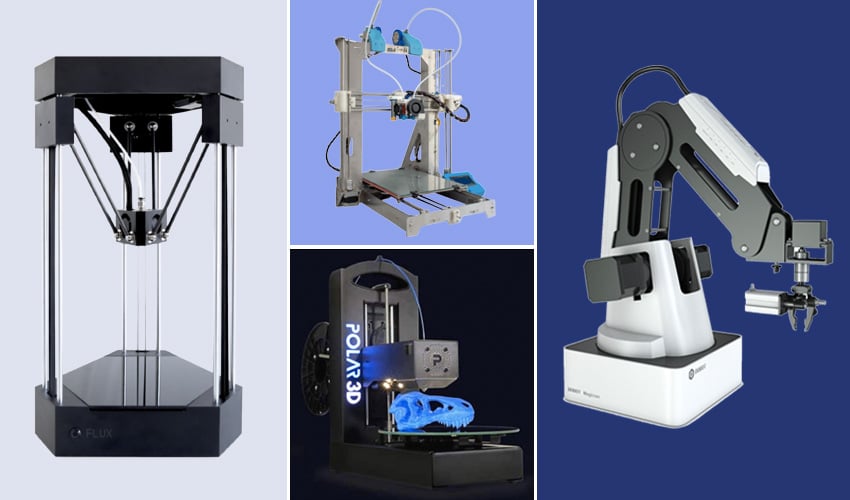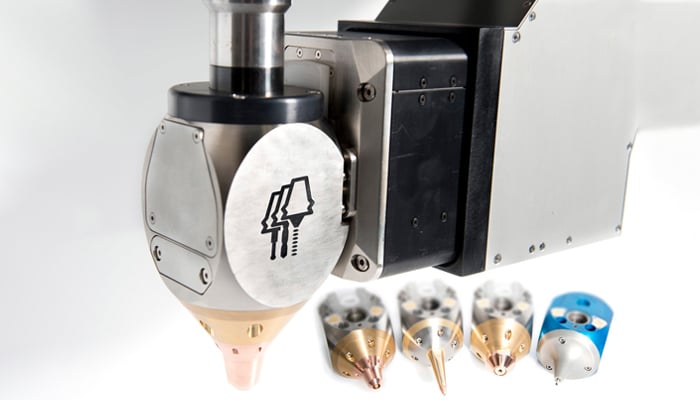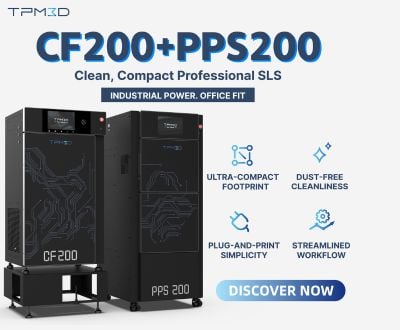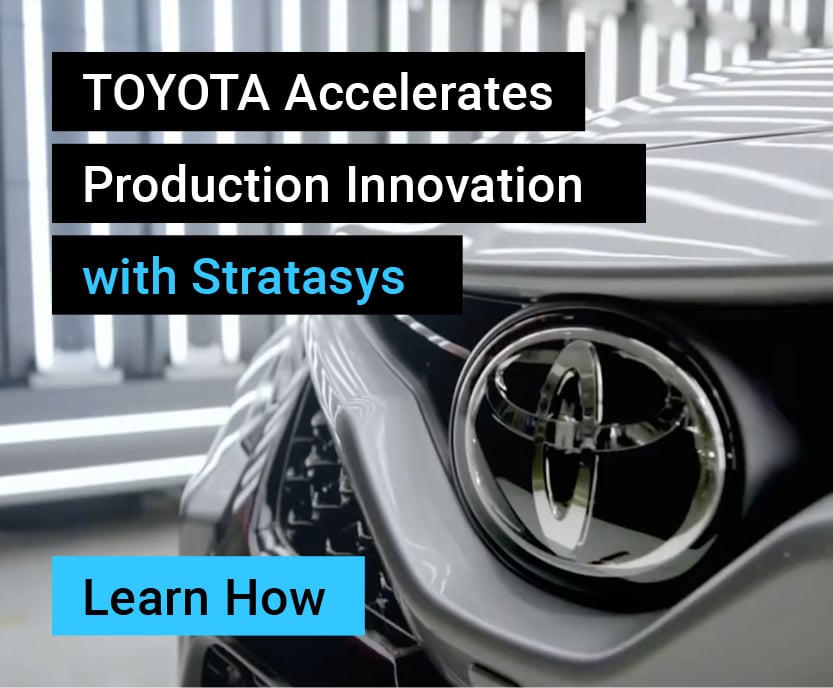The Types Of FDM 3D Printer

When we talk about 3D printers, many 3D technologies might come to mind. If we focus on FDM 3D printers (fused deposition modeling), we can find different types of machines that aim to achieve different results. FDM technology is based on the extrusion and deposition of molten material layer by layer on a printing plate. The most common filaments used with this process are PLA and ABS, although other more technical thermoplastics such as PETG, ASA, nyon, Ultem, etc., can also be used. In this comprehensive guide, learn about the differences between Cartesian, polar, delta, and hybrid printers, as well as printers that use robotic arms.
Types of FDM 3D Printers
1. Cartesian FDM 3D Printers
Cartesian 3D printers are the most common FDM 3D printers found on the market. Based on the Cartesian coordinate system in mathematics, this technology uses three orthogonal axes—X, Y, and Z—to determine the correct positions and direction of the print head. The Z axis refers to the layer height, and the X and Y axes determine the horizontal plane in which the extruder moves. The Z-axis can be determined by the user before printing or preset settings on the machine. Once it is clear where the extruder will be in terms of height, it is then positioned on the X and Y axes, and movement is in four directions.
Two well-known brands in the FDM market that use Cartesian technology for their FDM 3D printers are UltiMaker and Bambu Lab. The main advantage of these solutions is that they are generally inexpensive and are sold as kits to be assembled by the user.
2. Polar 3D FDM Printers
Polar 3D printers’ positioning is not determined by the X, Y and Z coordinates. Instead, the coordinate sets describe points on a circular grid (not a square), determined by angle and length. This means that the build plate rotates and moves while the extruder moves up and down. These printers are ideal for objects that follow a spiral, such as a plant vase or a traffic cone.
The main advantage of Polar FDM 3D printers is that they only have two motors, whereas Cartesian printers need at least three. In the long term, the polar printer has greater energy efficiency and can make larger objects while using less space. However, polar printers have less consistent accuracy. Because they rotate in a circle, there is much more accuracy in the center than in the outer area.
3. Delta FDM Printers
These printers are being seen more and more in the FDM 3D printing market. They operate with Cartesian coordinates and involve a circular printing plate that is combined with an extruder that is fixed at three triangular points (hence the name ‘Delta’). Each of the three points then moves up and down and left and right, thereby determining the position and direction of the print head. Therefore, the manufacturing limits of these machines are defined solely by the diameter of the base and the height of the arms. Delta printers, with a fixed print tray, were designed to speed up the printing process. Another advantage of delta printers is that they can be resized without affecting quality. However, they can prove more difficult to calibrate.
4. FDM with Robotic Arms
Robotic arms are most commonly known for assembling components on industrial production lines, especially in large automotive plants. While 3D printing has begun to incorporate robotic arms into their production process, most notably seen in the 3D printing of homes and buildings, this technology still remains in the development stage. Robotic arms are primarily used for the assembly of parts.
Although not a commonly used printing process, this FDM printing method is beginning to see an increase in use. This is because the process is not fixed to a printing plate, making it much more mobile. In addition, thanks to the flexibility when positioning the FDM 3D printer head, it is easier to create complex structures, which are sometimes larger thanks to the length of the arms. It should be noted that the final print quality is still far from that of conventional Cartesian printers, so many companies are working on developing it. Major manufacturers of robotic arms include Kuka and ABB, whose solutions are used by many companies, including COBOD and Massive Dimension.
5. Hybrid Printers
Hybrid manufacturing is defined as a combination of additive (3D printing) and subtractive (CNC machining, milling) methods in a single solution. It is a machine that allows the exchange of tools for model creation. In the case of FDM 3D printers that incorporate subtractive heads, most tend to have a Cartesian structure. However, there are other cases, such as the Kraken project, which rely on a robotic arm capable of extruding material, but which also use subtractive methods, making it a hybrid manufacturing project. It should be remembered that any solution that incorporates both technologies will have a higher price tag, although the benefits can be far greater as it expands the capabilities of part creation.

Hybrid 3D printers offer more printing possibilities.
Which type of FFF / FDM 3D printer do you use? Let us know in a comment below or on our LinkedIn, Facebook, and Twitter pages! Don’t forget to sign up for our free weekly Newsletter here, the latest 3D printing news straight to your inbox! You can also find all our videos on our YouTube channel.








Polar FDM printers still need three motors not two as stated.
Great! you have explained FDM 3D printer in a fantastic way, well! yes, Desktop 3D printers are employed in this additive manufacturing technique. FDM 3D printers are popular because they are simple to use, and produce good results.
I have to need 3d Printer. Type: FDM
Technical Specification:
Operating Range: 600x600x600 mm
Dimension: 820x790x1010mm
Layer Resolution: 0.05~0.4mm
XY Axis Positioning Accuracy: 0.011mm
Z Axis Positioning Accuracy: 0.0025mm
Filament: PLA/ABS/WOOD/TPU/NYLON
Display: Touch Screen
Printing Speed: 30~250mm/s
Connection: USD/SD Card
Number of Sprinkler Heads: Single head
Nozzle Diameter: 0.4mm
Material Diameter: 1.75mm
Support File Format: STL, G-Code, OBJ
Please send me price quote and catalog. Will be grateful to you.